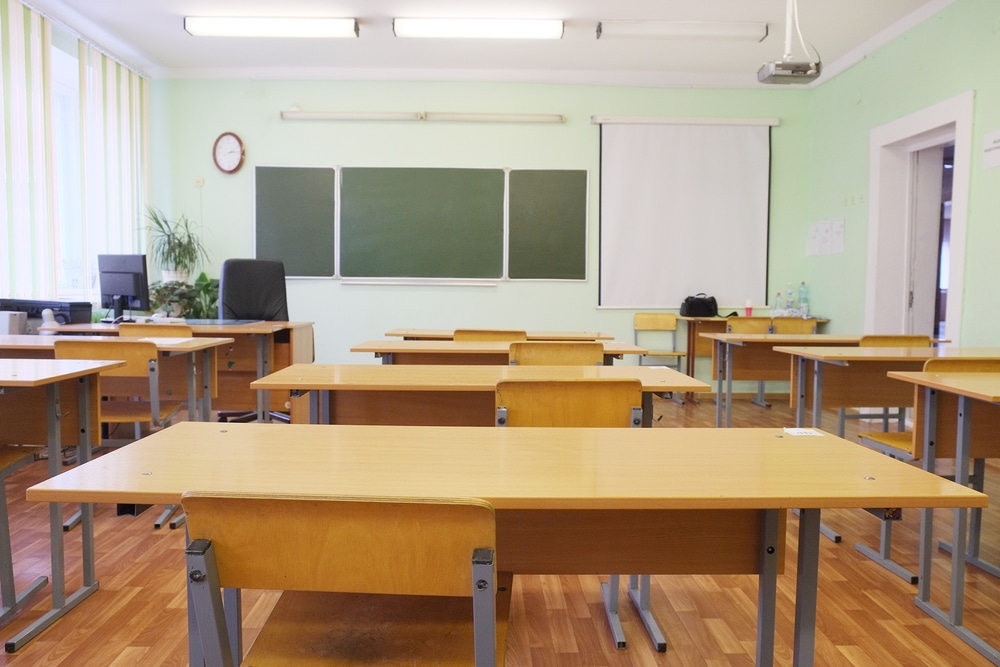Education is based on the idea of continuous improvement and adaptation, much like all other fields where innovation is highly valued. The way instructors educate, how well students perceive the world, and even how educational programs themselves develop all reflect this.
Educational environments and contemporary school furniture design are changing as they become an increasingly important part of the learning process.
With that in mind, this detailed blog entails popular furniture trends and design elements that progressive schools use to be successful in light of this change.
The Need for Kid-Friendly Furniture in Schools
The primary factor driving the market is the rising demand for furniture with ergonomic designs to reduce health and posture issues in children.
One of the main objectives of educators is to create pleasant and effective learning settings, which has a beneficial impact on the worldwide school furniture market.
Portable and adaptable furniture with simple reconfiguration has become essential in the new era of comprehensive, interactive, and dynamic education methods like blended learning and flip classrooms.
Furthermore, school furniture comes in a variety of sizes and designs and is manufactured from sturdy materials like wood, metal, or plastic. It often comprises of desks, seats, boards, tables, and cupboards that aid in improving concentration and task completion for students.
Manufacturers currently offer multi-purpose furniture for collaborative learning in a variety of forms, colors, and styles. They are also concentrating on releasing mobile, adaptable furniture that is simple to rearrange in order to accommodate new dynamic teaching approaches.
- Facilitate learning and teaching: Children will learn better if they feel more at ease spending extended periods of time in classrooms. The new lightweight, portable modular furniture, which is intended to provide teachers easier access to each and every kid in the classroom, will also facilitate instructional methods.
- Efficiency: The new designs will provide the effective use of raw materials in a low resource situation, positively affecting the environment and encouraging the responsible use of precious resources.
- Sustainable growth: Local furniture production will assist strengthen local manufacturers’ capabilities and lessen dependency on importing finished products. Local production will increase the local economy, simplify upkeep, and extend the life of furniture.
- Transport: Furniture that is flat packed will be simple to move, handle, and assemble, which will result in significant transportation cost savings, reduced carbon emissions, and fewer occurrences of damage during transit.
Popular School Furniture Trends and Design Ideas for 2023
The students of today are smart individuals who have grown up with handheld technology, brand marketing, and the sexiest product designs.
They are experience-driven and have high standards for the surroundings they live in. The classroom must meet and reflect real-world expectations if preparing students for the world is even a small portion of the educator’s job.
Rows of desks, memorization, and one-size-fits-all instruction are remnants of the industrial revolution.
Some Upcoming Trends
- School breakroom furniture: Classroom activity breaks featuring exercises students can complete without any equipment.
- Classroom fitness: A location inside or next to the classroom that has equipment and movement directions.
- Lounge desks: Encourage students to alternate between sitting and standing in the classroom.
- Mobile furnishings: Furniture that can be easily moved and customized for individual, group, and whole-class activities (such as furniture on castors).
- Writable surface: Encourage teachers and students to wander around in a broader area by creating writable spots on various walls where they may jot down thoughts.
Biophilic Design (Bringing Nature into the Classroom)
Including elements of nature in the layout and architecture of classrooms and educational facilities is known as “biophilic design.”
Schools can accomplish this by using organic textures and themes (repeated throughout the room), highlighting natural lighting, emphasizing natural materials (such as wood), emphasizing natural lighting, increasing air quality, and imitating nature’s natural color palettes.
This trend perfectly complements staff and student goals for a greener, healthier living.
Comfort in The Classroom (The Comforts of Home)
Similar to the residential trend in office design, comfortable, informal areas are being integrated into classrooms and educational institutions.
A sense of community and comfort are created in the classroom by providing quiet reading areas with cozy couches and chairs, lounge-style seating sections for informal group work, and long workbenches that resemble kitchen tables for cooperation.
This trend will make students who are accustomed to café culture feel completely at home.
Placemaking (Ownership)
Engaging pupils requires taking into account the importance of fostering a sense of place or ownership.
An environment that is comfortable and familiar is created in a customized classroom where students choose the décor or seating arrangements. More importantly, this promotes student engagement and enhances their learning experience.
In addition to supporting a range of teaching and learning styles, providing choice through various seating options, desk mobility options, and furniture that can be configured in different ways can help students feel a sense of belonging and ownership.
Technology (A Tool for Collaboration)
Technology integration into the collaborative learning process is the responsibility of the teachers.
Although many people worried technology would enter the classroom, it really enhances human contact and is a great tool for collaboration, tele-present instruction, and communication.
Mobility (And Adaptability)
The new classroom is flexible beyond all things. Simply put, a learning environment cannot be composed of inflexible rows of desks since there are simply too many diverse activities that a teacher wants to do in his or her courses.
Now, the teacher and the pupils can arrange the furniture in any way they see fit by placing it on casters or making it light enough to lift.
Open Areas
The most number of open areas is essential to that perfect flexibility. The common areas and classrooms are considerably more open than they were in earlier generations of schools. It not only facilitates moving items about, but it also exudes a friendlier, more welcome air.
Or More Supple Areas
The outdated notion that pupils cannot learn in comfortable seats is eroding. The coffee shop environment that students are accustomed to outside of school is made possible by sofas and softer chairs.
If given the chance, students would gather in this type of area the most frequently since it encourages the exchange of ideas.
Power All Around
Students frequently require locations to charge their gadgets as they bring more and more into class. In contrast to earlier classrooms, which had few outlets, modern furniture sometimes includes built-in charging ports.
These are especially useful in areas where students will be sitting for extended periods of time, such as couches, desks, and the numerous carrels in the library.
Adorn Numerous Surfaces
The fact that many kids feel safe sitting in a corner is a significant finding. They choose to sit near the walls, which demonstrates this.
In this instance, take into account designing a classroom with more than four corners. To divide up space, you can use screens, fabrics, high-backed seats, and mobile storage units. Establish zones inside a space.
Additionally, there are additional spaces in schools that can be utilized more efficiently. Why just allow food in the canteen? Is it possible to make a hallway active? And how can you set up settings for impromptu gatherings and informal education?
Stowage
For many years, cafeteria tables could be folded and stored away, but now other pieces of furniture in the school are following suit.
When you need to make a flexible whole-group space in the constrained space of a classroom, nesting tables and chairs for classrooms are especially useful.
Summing It Up—School Furniture Market Trends
One of the main factors driving the market forward is the huge increase in applications to schools around the world, as school furniture is considered to be an integral component of the educational infrastructure.
Additionally, initiatives launched by the governments of several nations to build new schools and advance education are giving manufacturers in the sector lucrative growth potential. In addition, a lot of schools are emphasizing the installation of high-quality furniture to increase comfort and enhance student learning.
The market is expanding because of the emerging trend of smart classrooms, which feature computer displays and projectors to facilitate studying in schools.
To further reduce carbon footprints and preserve natural resources, major firms are producing environmentally friendly alternatives constructed from recyclable and sustainable materials like waste wood. Additionally, they are selling aesthetically pleasing, bespoke furniture through online retail channels.
Hence, this is expected to have a favorable impact on the market in the coming years, along with the booming e-commerce sector and the rising use of ergonomically designed furniture that helps reduce health and postural issues in youngsters.







